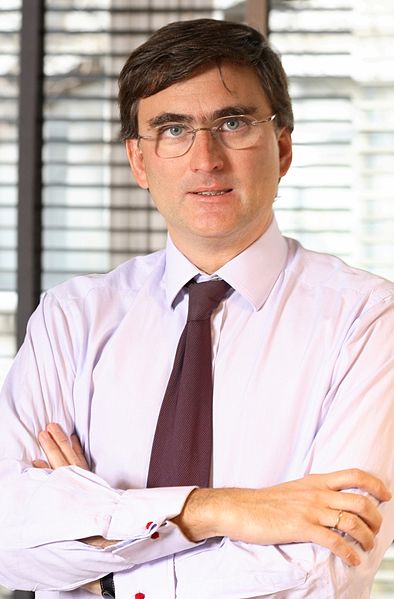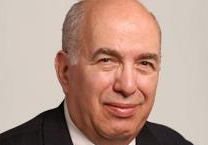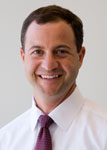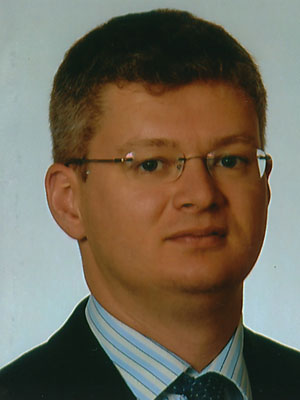What is the “Warren Buffett of Europe” Up To?

Every first quarter of the year, the Spanish firm Bestinver Asset Management holds its annual meeting with investors. This year, the meeting had to be postponed until 16 April (from 4 March) because of administrative problems with the venue where it was originally scheduled to be held. The event is a small-scale replica of the Berkshire Hathaway meeting, but it is large enough to fill a 3,000 seat theater in IFEMA, Madrid’s main convention center, and includes an unlimited Q&A section.
Bestinver’s chief investment officer, Francisco García Paramés (labeled the European Warren Buffett), has become an icon for the Spanish investment and business community. Even though he is not yet a household name in Spain, as Buffett is in the United States, the financial media pay special attention to what he has to say. Bestinver’s flagship fund, Bestinfond, has yielded a 16.1% annualized return since its inception.
How It All Started
The professional origins of Paramés are thoroughly described in Ronald W. Chan’s book The Value Investors: Lessons from the World’s Top Fund Managers.
Bestinver is a wholly owned subsidiary of the Spanish industrial conglomerate ACCIONA. Paramés joined the company in 1989, just after finishing his MBA at IESE Business School. In the beginning, the mission of Paramés and his boss was to analyze merger and acquisition opportunities in Spain. When that activity slowed down, Paramés began to analyze Spanish stocks to keep himself busy.
Paramés learned about value investing from his boss, who provided him with an investment framework. Paramés’s style began to take shape when he read One Up on Wall Street by Peter Lynch. After Lynch’s book, he read all the books that he could find on value investing. He read about Warren Buffett, Benjamin Graham, John Neff, Sir John Templeton, Walter Schloss, and Philip Fisher, to name a few. With little pressure on him in his first two years of employment at Bestinver, he was able to learn at his own pace.
Two years into his job, Paramés took the reins of the division when his boss resigned and he convinced the Entrecanales family to let him run Bestinver’s portfolio on his own, which he did until 2003 when the company hired another fund manager (Alvaro Guzmán de Lázaro, CFA) to help him with the workload. A third fund manager, Fernando Bernad, joined the firm in 2007.
In January 1993, Bestinver launched Bestinfond, which has generated a return of 1,965% since inception as of 30 April, or 16.10% per year. Bestinver Internacional, which was launched in December 1997, has generated 337% as of 30 April, or 10.10% per year.
In 2005, the mandate of Bestinfond was changed to include international equities because the managers thought that Iberian equities were overpriced. Since then, all funds that the company manages are a combination of two portfolios: one made of stocks from Spain and Portugal marketed under the name Bestinver Bolsa and another composed of global equities, the aforementioned Bestinver Internacional. Currently, the weights of these two portfolios in Bestinfond (Bestinver’s flagship fund) are 80% Bestinver Internacional and 20% Bestinver Bolsa.
Investment Style
Since the 2008 and 2009 market panic, during which the net asset value of the fund fell 60% from peak to trough, the managers’ investment style has drifted slightly. During an interview with Value Investor Insight in November 2012, the managers stated that they started with a style similar to that of Benjamin Graham — seeking cheap assets irrespective of the company’s competitive position — but that now they think more like Buffett and Fisher, in the sense that they prefer quality over cheapness.
Bestinver’s second adjustment has been that they now manage a more concentrated portfolio. A few years ago, they had between 100 and 120 issues in their international portfolio; now, they have around 50, with the 15 best ideas representing 70% of the portfolio. Paramés stated: “The more you concentrate your energies, the surer you have to be about everything (barriers to entry, leverage, threats). Each company in which we hold an important position must be a very safe business by its nature.”
One feature that differentiates Bestinver from other value funds is its high portfolio turnover rate (usually over 100%), although the replacement rate is only 25%. This high turnover is because of special taxation in Europe for capital gains within a fund of just 1%, whereas the tax rate for capital gains at the fund level is 21%. That gives them the advantage of being able to switch between stocks and being able to rebalance depending on stock performance. For this reason, they advise their clients to let them do the buying and selling of stocks.
As far as valuation is concerned, they like to buy high-quality businesses with free cash flow (FCF) — meaning operational cash flow minus capital expenditures — at multiples of less than 11–12 times. Their target price is usually set at 15 times. The rationale for 15 is that it is the long-term average at which stocks generally trade, which implies a FCF yield of 6.6%. To determine business quality, Bestinver’s managers use return on capital employed (RoCE), which measures the efficiency and profitability of the company’s investments.
The managers also pay special attention to corporate governance. To avoid the principal–agent problem, they favor family-owned businesses over companies with widespread stock ownership run by professional managers with no skin in the game. Most of their main ideas (such as BMW, Exor, Sonae, and CIR) are family owned.
Even though they don´t pay much attention to macroeconomic factors, the managers are followers of the Austrian school of economics. According to Paramés, the insights they gained from the study of the business cycle through the lens of the Austrian school helped them to stay away from banks and real estate companies, thus avoiding permanent value destruction of their holdings. This is one reason why the net asset value of the fund bounced back with a vengeance in 2009.
According to figures provided by the managers at the annual meeting, the international portfolio was trading at 8.7× FCF as of 29 March, and the estimated upward potential is 72%; its sales exposure is 56.7% outside of the eurozone and 38.3% in the eurozone.
As for the Iberian portfolio, it was trading at 7.9× FCF, whereas the IGBM (the benchmark for the Spanish equities market) is trading at 14.2×, and the managers estimate an upward potential of 90%; its sales exposure is 55.2% outside of Iberia and 39.3 in Spain and Portugal, with the remaining 5.5% in cash.
How They Educate Their Client Base
Apart from the day-to-day management of the two seminal portfolios, the managers devote a great deal of effort to educate their clients to instill in them a long-term view. One of the ways they try to achieve this goal is to charge a 3% early redemption fee for those who stay in the fund less than a year, so as to discourage market timing. Also, Bestinver’s webpage contains a lot of information on value investing, including articles, white papers, and interviews with famous value investors, as well as a list of recommended books.
Finally, the firm issues special reports to its clients at critical moments, such as during the sell-off of Spanish stocks in May 2010 and the market crash of mid-2011. In the latter, they showed how the market was “throwing the baby out with the bath water” by pointing to a number of stocks that were selling at values close to or under the companies’ net cash. It seems that the strategy of communication worked because, unlike their Spanish peers, they didn’t experience major redemptions during these tough times, and the inflow of money into the fund has been positive since the market bottomed in March 2009. This fact has had a great impact on the management of the funds because the managers haven’t had to sell precisely at the wrong moment in order to meet redemptions.
Please note that the content of this site should not be construed as investment advice, nor do the opinions expressed necessarily reflect the views of CFA Institute.
Photo credit: Wikimedia Commons



One comment on “What is the “Warren Buffett of Europe” Up To?”